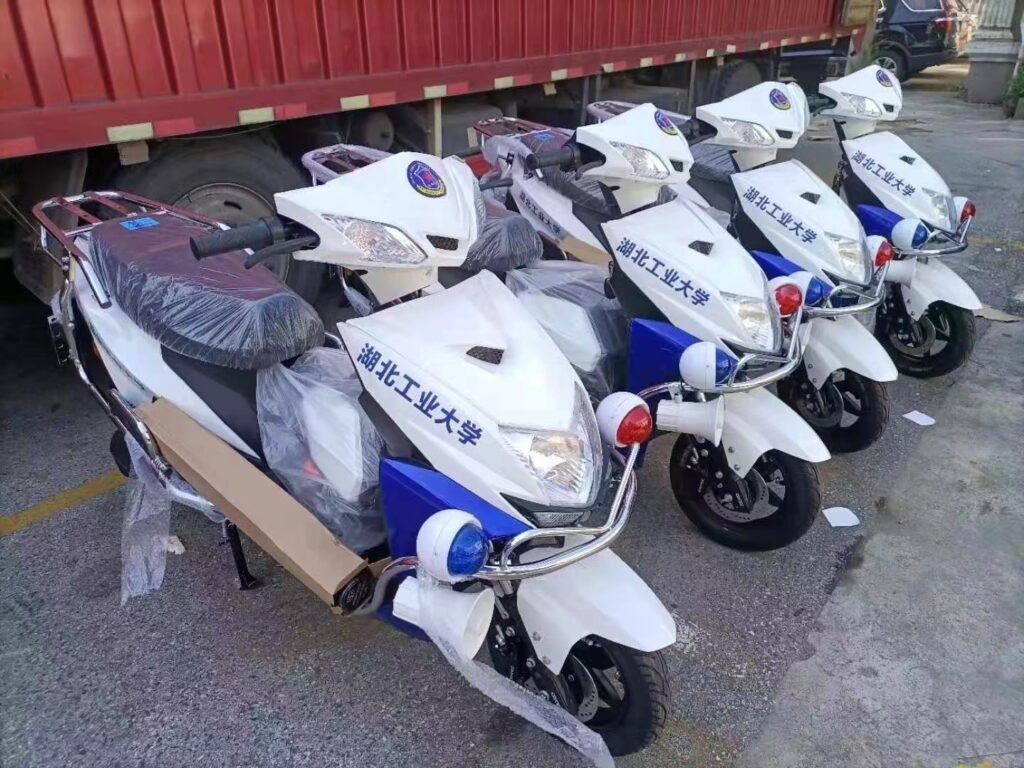②A Comprehensive Guide to Understanding the Southeast Asian Electric Two-Wheeler Market
*Southeast Asian Electric Two-Wheeler Market Overview** Under the encouragement of policies promoting the transition from fuel to electric vehicles and the rapid growth of the new energy market, local motorcycle brands in Southeast Asia are also entering the electric two-wheeler market. They either collaborate with major manufacturers or independently design and launch new models to claim a share of the market. Compared to Japanese and Western brands, which are widely accepted across Southeast Asia, local brands primarily concentrate on the high-sales markets of Indonesia, Vietnam, and Thailand. **Indonesia: Expanding Local Electric Motorcycle Brands** In recent years, Indonesia has witnessed a continuous growth and diversification of local electric motorcycle brands, including SMOOT, MAKA Motors, Gen Indonesia, and Ilectra Motor Group (IMG). Gen Indonesia, established in 2018, aims to disrupt the market by integrating smart hardware and software to develop eco-friendly and energy-efficient electric motorcycles. SMOOT, a brand under Southeast Asia’s electric motorcycle group SWAP, sells electric motorcycles and leverages SWAP’s battery-swapping technology and smart app SWAP Energi to offer users a more convenient electric travel experience. MAKA Motors, founded in 2021, aims to offer competitively priced electric motorcycles that perfectly blend mileage, power, usability, and durability. Established in 2022, IMG focuses on developing electric two-wheelers and aims to build a supporting ecosystem, including infrastructure related to electric vehicles. **Vietnam: A Growing Enthusiasm for Electric Two-Wheelers** Vietnamese consumers have shown great enthusiasm for electric bicycles, electric motorcycles, and scooters. The Vietnamese market is home to many active players, including Honda and Yamaha, which have been planning to introduce more electric models in response to the increasingly saturated fuel-powered motorcycle market. Vietnamese company VinFast started producing electric two-wheelers in 2017, with an annual capacity of 500,000 units. Although VinFast’s electric two-wheeler sales have increased over the past two years, the company is still in the investment phase and is spending on strengthening local two-wheeler infrastructure. Following VinFast’s launch of a series of electric motorcycles and its capture of the market, other motorcycle companies have also entered the fray. Local brands such as Pega, Dibao, Anbico, Dat Bike, and Selex Motors have also seen strong sales in Vietnam. Pega entered the Vietnamese market in 2012, collaborating with manufacturers like Honda and Yamaha to launch its first localized product in 2017. Dibao, operating since 2001, targets young Vietnamese consumers and has achieved high sales in electric motorcycles and 50cc motorcycles. Anbico, established in 2015, has become one of Vietnam’s top electric motorcycle manufacturers. Dat Bike, founded in 2019, focuses on addressing the limitations of most electric motorcycles in the Vietnamese market by offering models that rival fuel-powered motorcycles in terms of capacity and speed. Selex Motors, established in 2018, specializes in high-usage scenarios like logistics and delivery services, capable of transporting heavier loads than traditional motorcycles. **Thailand: Home of Manufacturing for Foreign Motorcycle Companies** Thailand has become a manufacturing hub for many foreign motorcycle companies, with many imported brands being produced there. However, local Thai motorcycle brands are relatively few, with GPX being a standout. Founded in 2007, GPX launched its first off-road motorcycle two years later. The brand’s product line now includes both off-road motorcycles and electric scooters, and it has established a network of 310 dealers in Thailand, exporting to seven countries. **Malaysia: Modenas and the Local Market** Malaysian motorcycle manufacturer Modenas, established in 1995, has also achieved good sales locally. By 2007, the company had produced its millionth unit. Known for its scooters and light motorcycles, Modenas has independently developed and produced about 50 different motorcycle models. To expand its international footprint, Modenas has diversified its product range through partnerships with other motorcycle manufacturers. **Singapore: A Smaller but Ambitious Market** The electric motorcycle market in Singapore is relatively small, but brands like Scorpio Electric and ION Mobility are actively working to popularize electric vehicles. Scorpio Electric, founded in 2017, focuses on developing and producing high-quality, high-performance electric motorcycles. ION Mobility, established in 2019, produces smart, eco-friendly, and affordable electric vehicles, with Indonesia as its first market. Singapore-based electric two-wheeler company SLEEK EV, founded in January 2022, has launched smart electric vehicles in Thailand and Singapore, using funding to develop smart vehicle control units to enhance the user experience. **Chinese Companies Expanding Overseas: Competing with High Cost-Performance Ratios** In recent years, Chinese electric two-wheeler exports have been steadily increasing. Data shows that in 2021, China exported 22.9 million electric two-wheelers, a year-on-year increase of 27.7%. From January to July 2022, China’s electric two-wheeler exports reached 20.63 billion yuan, a year-on-year increase of over 9%. Southeast Asia, full of opportunities, is becoming a popular destination for Chinese electric two-wheeler manufacturers to expand abroad. Most electric motorcycles in Southeast Asia are imported from China. Chinese motorcycles first entered Southeast Asia in the 1990s, with “Chongqing-made” motorcycles selling well due to their high cost-performance ratio. Although Chinese motorcycles achieved some sales in the Southeast Asian market, they did not establish a strong brand presence compared to Japanese and Western motorcycle companies. However, in recent years, Chinese electric two-wheeler brands have been accelerating their overseas expansion, driven by favorable policies. The signing of the Regional Comprehensive Economic Partnership (RCEP) agreement by 15 countries, including the ten ASEAN countries, China, Japan, South Korea, Australia, and New Zealand, has reduced tariffs on two-wheeler exports to major Southeast Asian countries. Additionally, Chinese electric two-wheeler companies are leveraging the advantages of the Belt and Road Initiative to expand in the Southeast Asian market. Southeast Asian countries are hoping to attract foreign brands through subsidies to boost local manufacturing, which has indeed attracted the participation of leading Chinese electric motorcycle brands and emerging players. In the electric two-wheeler market, Chinese companies are attracting buyers with their high cost-performance ratios. Brands like Yadea, Aima, Tailg, Luyuan, Niu, Xiaodao, Xinri, Segway-Ninebot, and Gogoro are gradually expanding their influence in the Southeast Asian market through their well-established supply chains, continuous innovation in models, and improved cost-performance ratios. **Investment: Focusing on Manufacturers, Battery Swapping, and Second-Hand Vehicles** From 2018 to 2022, global micromobility investment, including
②A Comprehensive Guide to Understanding the Southeast Asian Electric Two-Wheeler Market Read More »
2-252x57.png)








